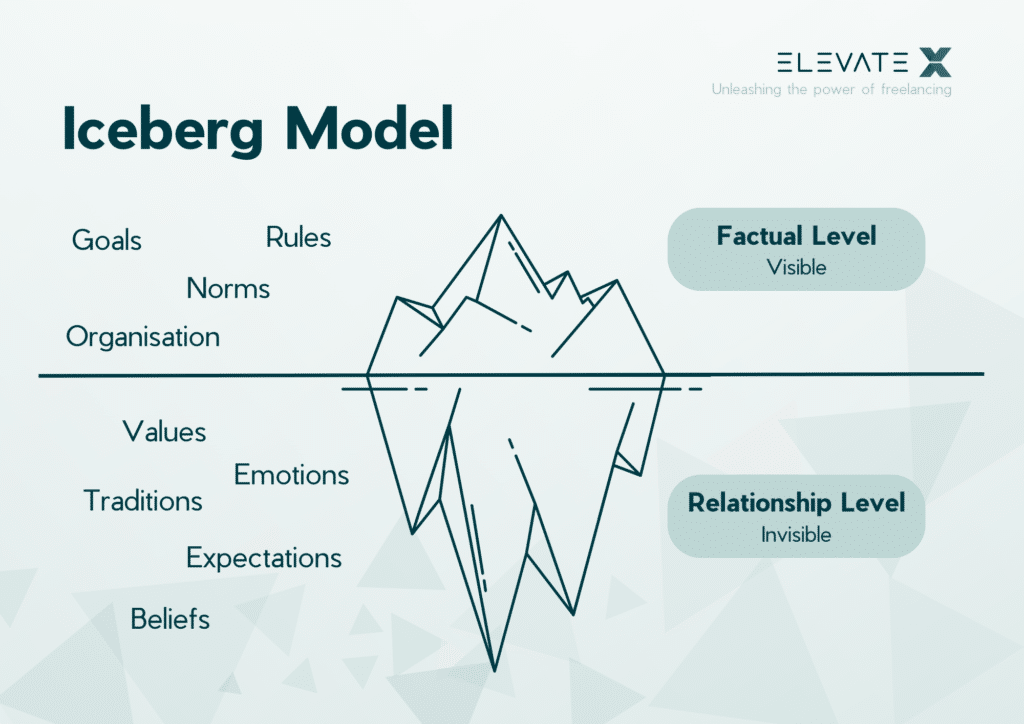In today’s business world, cultural alignment, known as Cultural Fit, is just as crucial as professional qualification. It’s no longer just about whether someone has the necessary skills. What’s far more important is whether that person truly fits into the team—do candidates and companies share the same values and visions? Our latest blog post sheds light on why this aspect is essential for the long-term success of your team.
What is Cultural Fit?
Cultural fit, or “cultural congruence,” is a term used in personnel psychology that describes the alignment of value systems and behaviors between job candidates and employees. This alignment significantly influences the work atmosphere and the cooperation among team members.
Employers should, therefore, ask themselves whether the applicant matches the company culture. In times of skilled worker shortages, cultural fit is a decisive factor in recruiting, and the view that the selection of the right employees is purely about professional skills is long outdated. Because smooth cooperation, based on shared values, is the foundation for successful teamwork. Even if a candidate looks perfect on paper, has the right professional qualifications, and can present impressive work references – if the values do not match, the work relationship will hardly be successful in the long term.
KEY POINTS
- Cultural fit is understood as the alignment of value systems and expectations of candidates with the culture of the company.
- Cultural fit can be ensured by understanding the corporate culture and asking specific interview questions.
- A high cultural fit leads to higher productivity, employee satisfaction, long-term employee retention, and strengthens employer branding.
What Role Does Cultural Fit Play in the Hiring Process?
Companies need to understand that for today’s workers, especially the younger generation, identification with the employer is sometimes more important than salary. In the age of the war for talent, where young talent often has to choose between several job offers, company culture is a decisive factor for many.
Employer Branding
This is where employer branding comes in – the authentic external presentation of one’s company culture and satisfied employees as ‘brand ambassadors‘. Therefore, the company culture should be reflected in employer branding and considered in recruiting and active sourcing measures.
The Right Recruitment
In addition to education and professional experience, an applicant’s personality should also be a good fit for the company’s working environment. For experienced recruiters, it is a simple task to select the candidate from a pool of applicants whose professional qualifications best suit the company. However, this does not necessarily mean that this person also has a “cultural fit”.
Therefore, in job interviews, it is essential to identify candidates who meet the necessary qualifications and also positively contribute to the company culture. An employee who satisfies all the requirements but prefers to work alone is less suitable for a company that places great value on teamwork. A company’s understanding of its own culture is therefore crucial to the recruitment process.
Is Cultural Fit Important for Freelancers?
The importance of cultural fit should not be underestimated with freelancers either. Even if they are employed temporarily for a project, they should respect and support the values and culture of the company. This not only promotes cooperation but can also lead to a positive business relationship in the long term.
This is exactly where ElevateX stands out: We recognise that the key to successful collaboration depends on more than just professional qualifications. That’s why we take time to understand both the cultural and operational nuances of our clients, as well as the values of our freelancers, to find the right match. Our approach ensures that the freelancers we place are not only professionally qualified, but also fit well into the team. This ensures a harmonious interpersonal relationship and a professional way of working – for smooth collaboration and excellent results.
Join our freelancer community now or find the ideal freelancer who is a perfect fit for your company!
The Role of the Company
The companies themselves are also called to action. They should promote an open company culture that allows freelancers to be quickly integrated into teams without a sense of competition. Leaders should focus on common project goals and emphasize that freelancers are valuable additions who bring fresh perspectives and expertise. Mentors can help freelancers settle in quickly and become clear about work methods and responsibilities, contributing to effective collaboration.
Our free handbook “How to Successfully Work with Freelancers” can help!
Ensure Cultural Fit With The Right Freelancer.
How to Ensure Cultural Fit?
The goal of the recruiting process should be to achieve a high cultural fit in addition to professional competencies. There are various steps that companies can take to successfully check their cultural fit criteria.
Ensuring Cultural Fit With The Iceberg Model
To make cultural fit measurable in the first place, companies must first define and understand their own corporate culture. The iceberg model can help with this.
The company culture consists of individual and often unspoken guidelines, norms, and values that guide the behavior of employees in everyday work. For example, decision-making processes and internal communication are primarily characteristic of a company’s culture.
The iceberg model visualizes all of the factors that make up a corporate culture: While some of them are obvious, others are ‘invisible’ beneath the surface.
The Company Culture Iceberg:
The Factual Level (visible)
- Company values and norms
- Goals and visions
- Ethics
- Rules
- Structures, strategies, and processes
- External representation
The Relationship Level (invisible)
- Leadership style
- Actions and behaviors
- Beliefs
- Traditions
- Unspoken rules
- Hierarchies
- Expectations
- Communication behavior
- Appreciation
- Emotions and needs
- Feedback culture
In order to determine the cultural fit criteria, it is important to also explore the hidden components of the corporate culture, which are not immediately recognizable at first glance, but often form the foundation for the visible factors. Questions that should be answered, for example, are: According to which criteria are decisions made in the company? How are problems solved? On which traditions does the company build, and how does idea development take place?

Ensuring Cultural Fit With Interviews
Every company has a different corporate culture. Therefore, the questions about cultural suitability will vary depending on the company and organization. However, there are three categories of questions that belong in every cultural fit interview:
1. Standard Questions
These are general questions in a job interview that do not go in-depth but help to get a first impression of the candidates.
Example questions could be:
“Why are you the perfect fit for us?”
“What do you know about our company?”
“Where do you see yourself in 5 years?”
“What do you value about teamwork – and what not?”
2. Questions About Personality
The second category aims to gain insights into the candidate’s personality. These types of questions are harder to prepare for and therefore provide deeper insights into the candidates’ thinking.
Questions like:
“Which situations are uncomfortable for you?”
“How have you dealt with conflicts with colleagues in the past?”
“What motivates you?”
“How has the corporate culture of your last employer influenced you?”
“Define the work environment in which you imagine you can be most productive and also happiest.”
These questions quickly reveal whether the company’s values are also found in the candidate’s world and whether the expectations and requirements of the applicant could be realized at all.
3. Provocative Questions
Lastly, more unusual questions that surprise the candidate and prompt spontaneous answers are suitable.
For example:
“Where in your resume have you lied or consciously left something out?”
“What qualities did the best boss you ever had have?”
“What annoys you at the workplace?”
“Have you ever completely botched a project?”
Even though the questions provide a comprehensive picture of the candidate, gut feelings can be deceiving. It is important that all candidates were asked the same questions to ensure comparability. Therefore, it makes sense to create a catalog of questions tailored to the company in advance of application rounds to structure the conversation. This catalog is a valuable decision-making aid for cultural fit after the interview and surpasses gut feeling to avoid costly mistakes in new hires.
Advantages of Cultural Fit
When the cultural fit is aligned with professional skills, it positively impacts various work areas.
Higher Productivity
Teams are more productive when they harmonize on a personal level and identify equally with the company. Moreover, a shared understanding of effective communication and problem-solving can make collaboration more productive.
High Employee Satisfaction
When employees identify with their company and feel valued, this has a positive effect on satisfaction. Expectations regarding value systems and norms are met on both sides with a high cultural fit, providing an ideal basis for harmonious collaboration.
A high cultural fit can reduce staff turnover because employees feel comfortable and appreciated at the workplace. This also saves on recruiting costs.
Stronger Employer Branding:
Satisfied employees are better ‘brand ambassadors’ and influence the external perception and thus the employer branding.
Consequences of a Lack of Cultural Fit
If the value systems of companies and employees do not match, this can have various negative effects on the work environment and the performance of the employees.
Poor Integration
An employee who does not fit well with the company culture may have difficulty integrating and becoming part of the team.
Low Motivation and Satisfaction
If an employee feels out of place, this can lead to lower motivation and satisfaction, which in turn can affect productivity.
Lower Productivity
Different values, norms, and communication styles can lead to misunderstandings and conflicts, which can impair the efficiency of collaboration and lead to unproductive work processes.
Increased Potential for Conflict
A lack of cultural fit can lead to tension and conflicts within the team, as different views and ways of working collide.
Turnover Intentions
Employees who cannot identify with the corporate culture may tend to leave the company sooner. This leads to higher costs for recruiting and training new employees.
Conclusion
Overall, cultural fit is a crucial factor for a successful and harmonious work environment. It significantly influences collaboration and the working atmosphere in the team. Therefore, companies should consider not only professional qualifications but also the personality of a candidate in terms of company culture. Freelancers who are hired temporarily for projects should also bring a certain fit with the company values to promote a positive business relationship.
Cultural fit describes the alignment of value systems and behaviors between candidates and employers.
Cultural fit can be ensured by first exploring the company’s own culture (e.g., using the iceberg model) and based on this, formulating a set of questions that can be used for interviews in the application process.
The advantages of a cultural fit include higher productivity, increased employee satisfaction, long-term employee retention, and a stronger employer branding.








